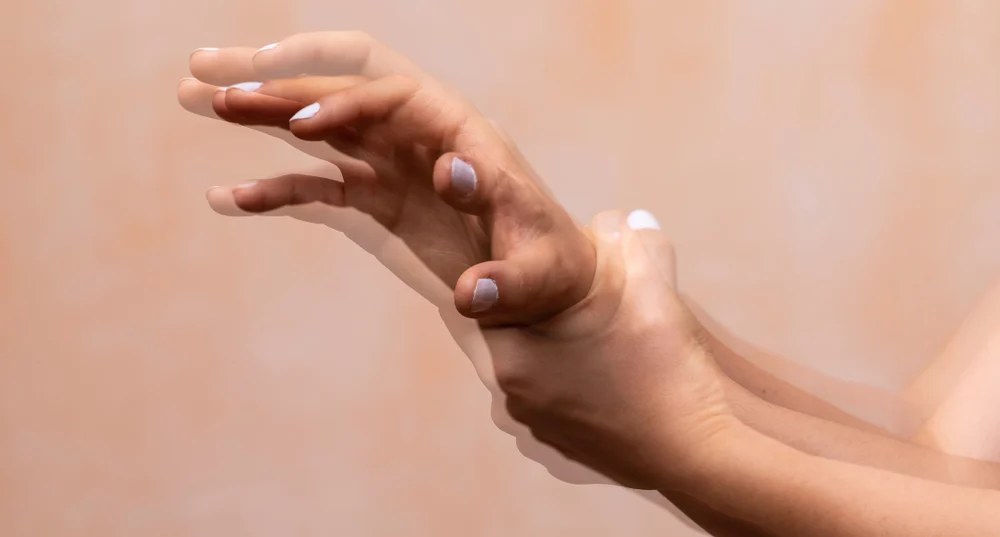What is Parkinson’s Disease (PD)?
Parkinson’s disease is a degenerative brain issue that is the root of many other problems like movement issues, balance problems, tremors, etc.
There is no treatment for Parkinson’s disease; however, many medications help manage its symptoms. Among these treatments, the use of medical marijuana for Parkinson’s disease is gaining attention because of the results its users are seeing, and it has little to no side effects.
Studies suggest marijuana enhances dopamine production, alleviates stiffness, and improves mood, offering an effective cannabis treatment for Parkinson’s disease.
What are the symptoms of Parkinson’s Disease?
People with age above 60 are more likely to have Parkinson’s disease. Here are some of the symptoms of Parkinson’s disease:
- Slowed Movements
- Tremors
- Stiffness
- Drooling
- Trouble Swallowing
- Sleep Disorders
- Loss of Automatic Movements

Does Weed Help with Parkinson’s Disease?
Research highlights the potential of weed for Parkinson’s in managing both motor and non-motor symptoms. In a Tel Aviv University study, 82% of PD patients using cannabis reported reduced stiffness, improved tremors, and better sleep.
In a 2015 survey, cannabis was found to be among the most effective methods for sleep and mood improvement in patients with Parkinson’s disease.
Non-motor benefits included relief from anxiety, stress, and depression, commonly associated with severe and chronic pain. These findings reinforce the role of medical marijuana for Parkinson’s in improving the overall quality of life.
How Does Medical Marijuana Help Parkinson’s Symptoms?
There isn’t only one symptom that medical cannabis for Parkinson’s disease resolves. Here are some ways in which cannabis may help:
- Motor symptoms: Cannabis reduces tremors, rigidity, and bradykinesia by enhancing dopamine levels.
- Sleep disorders: Cannabis improves sleep quality and helps fight against insomnia and fatigue in PD patients.
- Mood disorders: Medical weed reduces anxiety and stress levels among individuals with this specific condition.
Moreover, cannabis may protect neurons from oxidative stress, slowing disease progression. These effects make cannabis treatment for Parkinson’s disease a promising adjunct to traditional therapies.
Many patients with Parkinson’s Disease now use medical marijuana along with other treatments to help with their condition. Marijuana can help patients with stiff muscles and movement problems due to its analgesic and anti-inflammatory properties. It also helps produce more dopamine, an important chemical that Parkinson’s Disease patients have low levels of.
Research shows that medical marijuana can help alleviate many of the motor and non-motor symptoms of Parkinson’s Disease. In addition to boosting dopamine, cannabinoids also have antioxidant properties and can help protect neurons in the brain, potentially slowing down symptoms’ progression.
Should You Use Medical Weed for Parkinson’s Disease?
Yes, considering the benefits and early research, you can use medical weed to treat Parkinson’s disease symptoms. However, you must consult a medical marijuana doctor.
Physicians at My Florida Green will help you better understand your condition and make your access to cannabis products easy without any legal issues.
Which medical conditions are eligible for medical marijuana treatment?
Parkinson’s disease isn’t the only qualifying medical condition for medical marijuana. Weed is found to be helpful for conditions like irritable bowel diseases and cancer symptoms. People with sleep disorders and chronic pain are also found talking about how it helped them manage their condition and help them improve their lives.
Here, it is of the utmost importance to consult a medical marijuana doctor. They will help you know how cannabis treatment for Parkinson’s disease can help you. After the necessary guidance, you can buy cannabis from state-licensed medical marijuana dispensaries.
FAQs About Medical Marijuana and Parkinson’s Disease
Can medical marijuana help with Parkinson’s disease symptoms?
Yes, medical marijuana may help manage symptoms such as tremors, muscle stiffness, pain, sleep disturbances, and anxiety. Studies show it can improve motor and non-motor symptoms in Parkinson’s patients.
What is the best method of using medical weed for Parkinson’s disease?
The best method depends on individual needs. Smoking or vaping offers quick relief, tinctures provide precise dosing, and edibles deliver long-lasting effects. CBD products are ideal for those avoiding THC.
Do I need a medical card to use marijuana for Parkinson’s disease?
Yes, in most states, you need a medical marijuana card to legally purchase cannabis products. Parkinson’s disease is often listed as a qualifying condition for obtaining a medical card.
Does CBD work for Parkinson’s disease without THC?
Yes, CBD can help manage symptoms like pain, anxiety, and inflammation without the psychoactive effects of THC. It’s a popular choice for patients who want therapeutic benefits without feeling “high.”






